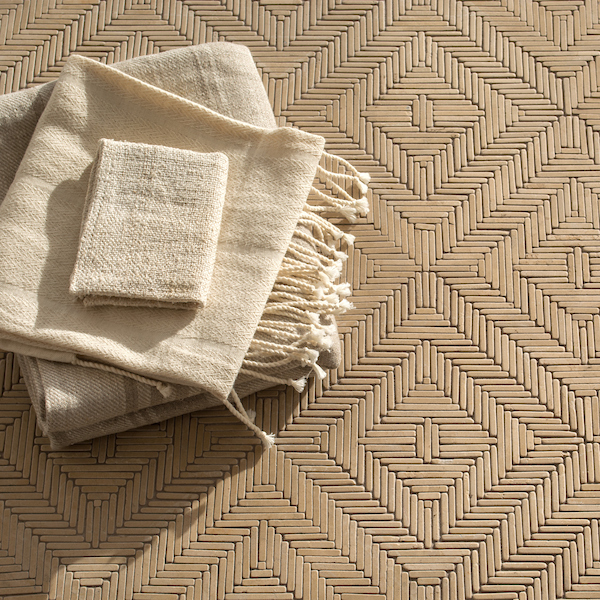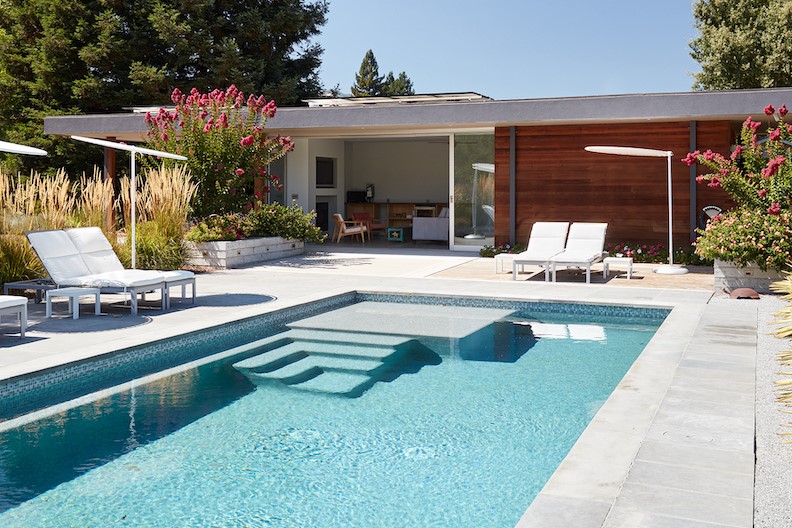Tissé: In French, it means “to weave.”
But for New Ravenna, it means new kinds of mosaics for walls and floors.
“The patterns are taken from chair caning, the textile world and furniture weaving,” says creative director Cean Irminger. “We looked at the way fibers interweave and made sure the textures work together – it makes the stone look like soft, wavy textiles.”
Her team started with techniques for creating a cable knit sweater, but also looked to rattan and chair caning. They deconstructed the way each is made in the original fiber and then figured out the weave and scale, to find the pattern and make the stone look like a stitch or cloth.
And these mosaics don’t have to dominate as the main focal point. Instead, they’re quiet. “We wanted to make them so the pattern is secondary and the texture is more important, because it’s like a canvas for a room,” she says. “They don’t scream ‘stone,’ but have a nice textural look.”
She sees similarities between textiles and mosaics. “They’re dependent on single pieces working together to create a finished piece and create a whole story,” she says. “Some are like espadrille shoes, or cardigans, or ginghams or even afghan rugs.”
And the color palette for the Tissé collection is toned down, with a warm brown, taupe and neutral feel. “There are a few special colors like pink in the more pattern-based tiles, but it’s still subtle,” she says. “They’re muted, natural colors with a shift toward warm, rather than cool, colors.”
And they used the tumbling process to bring down the color, take the hard polish off the top and soften the edges. “It mutes the colors from bright yellow to mustardy brown – it makes it fall back,” she says. “It becomes a single color with some textures and a pattern that pops out at closer examination.”
When it does, it weaves simplicity and complexity into a single texture.
For more, go here.
[slideshow id=1972]


